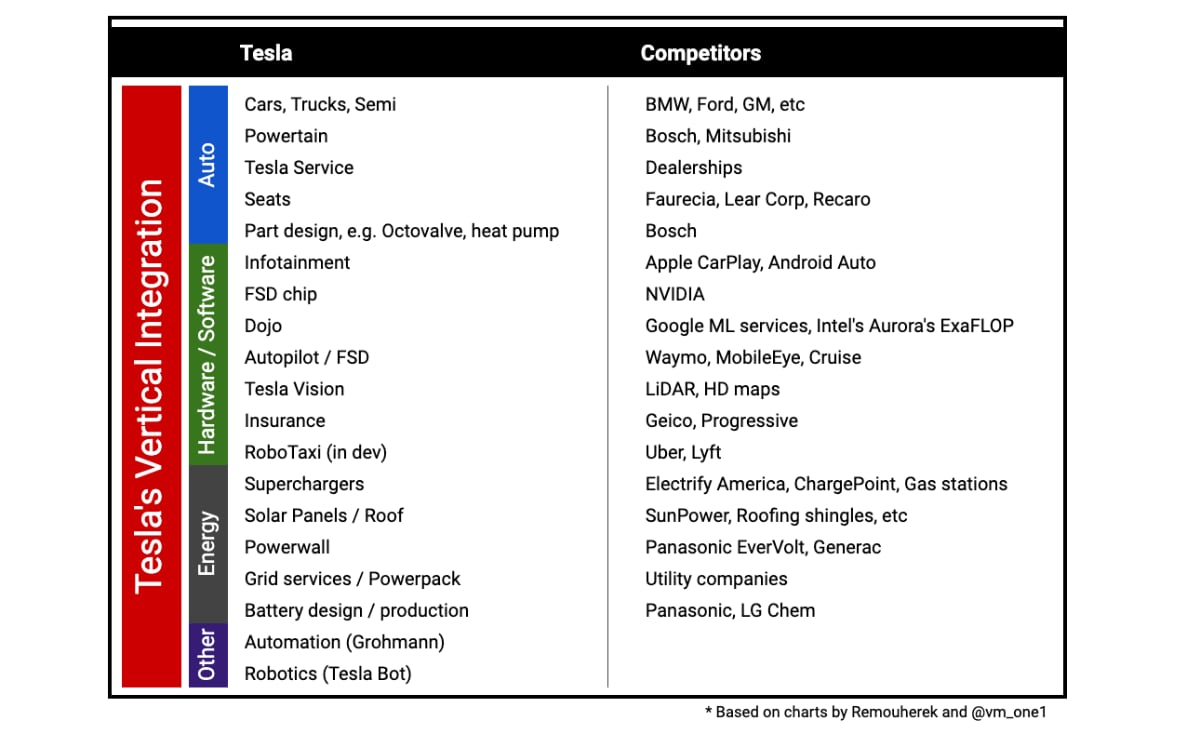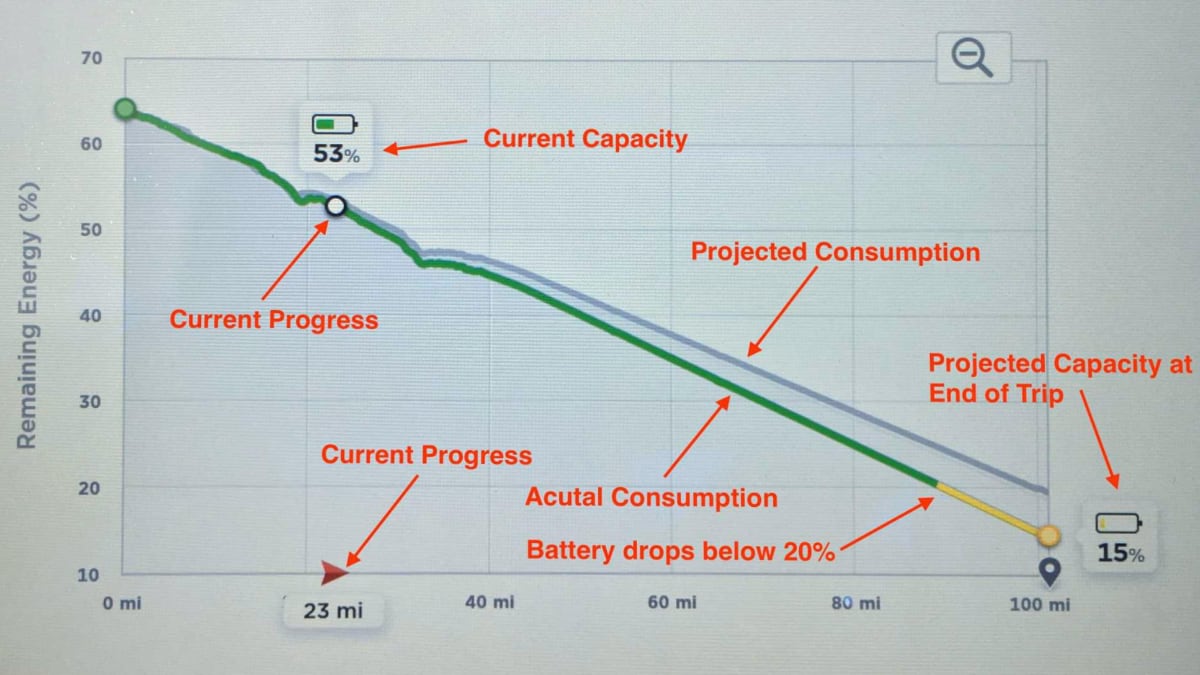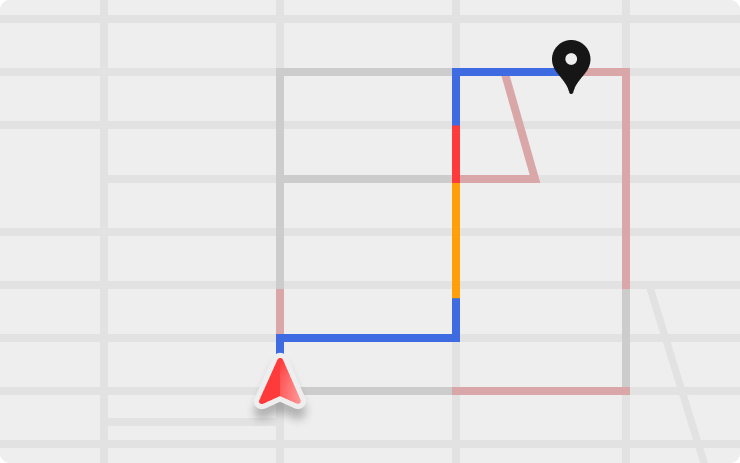By Gabe Rodriguez Morrison

Supply chain issues brought on by the pandemic have been particularly challenging for the automotive sector. A global chip shortage among an onslaught of supply chain obstacles have adversely affected the entire industry. Tesla’s vertically integrated strategy proved to be very advantageous when facing these supply chain challenges.
Tesla’s insistence on vertical integration used to be one of the main reasons the company struggled to become profitable and reach volume production. Now, it has allowed the company to scale rapidly while the broader automotive industry is down amidst a supply chain disaster.
The conventional automotive business model has traditionally concentrated on design and final assembly while largely outsourcing to suppliers. This strategy left them extremely vulnerable to supply chain turmoil.
In the past, automakers outsourced as much as possible and mainly focused on supply chain management. In the short term, this strategy reduced production costs but in the long term, legacy automakers lost the ability to adapt, innovate and advance technology.
Automotive manufacturing has typically relied on third party suppliers which has led to supply chain contingency and reliance on external companies. This business model has been successful for a long time due to the maturity of the internal combustion engine and a lack of need for innovation.
Tesla recognized the stagnant supply chain of the automotive industry and revolutionized it by adopting a vertically integrated strategy.
Tesla is a chain of startups
– Elon Musk
In recent years, Tesla has defied the conventional business model, reducing supply chain needs and reliance on other companies.
Tesla has vertically integrated many production steps, from battery production to electric powertrain production and self-driving software. According to Tesla CEO Elon Musk, Tesla is a “chain of startups.”
This strategy allowed Tesla to avoid shortages of batteries, which have hindered legacy automakers from reaching volume production of electric cars. Before legacy automakers began investing in electric vehicle manufacturing, Tesla partnered with Panasonic to build its first gigafactory to produce batteries. Now, the gigafactory ensures a reliable supply of batteries.
Lucid Motors, a newer EV automaker, has also adopted a more vertically integrated business model. CEO Peter Rawlinson says that gives them a huge advantage in the modern EV technology race.
In an interview, Rawlinson stated, “The electric powertrain cannot be bought off the shelf at a world-class standard, it is not a commodity. This is a technology race and the market doesn’t see it yet.”
Tesla’s in-house software development is perhaps their biggest advantage over its competitors. As a Silicon Valley born company, Tesla has never outsourced their software. They have instead developed a proprietary self-driving software that is improved by collecting data from Tesla’s network of over one million beta testers.
Ford CEO Jim Farley emphasized the company’s need to move away from the “catalog engineering” business model at a conference earlier this year, saying “The most important thing is we vertically integrate.”
Tesla is potentially going a step further to vertically integrate their supply chain. In light of the skyrocketing prices of lithium, Tesla may plan to get into the lithium mining and refining business. Tesla is considering mining some of its own raw materials for the same reasons that they developed their own batteries, produced their own electric motors and built their own computer chip and software for autonomous driving.
Tesla’s pace of innovation and lead in the industry has become clear as the traditional business model of outsourcing components and software to cut production costs is quickly becoming outdated.
By Lennon Cihak

Tesla is making insane improvements to range prediction
Tesla is implementing a number of impressive changes to further increase the accuracy of range prediction in its vehicles.
In update 2022.20, Tesla added factors like wind direction and humidity to better estimate the range of the vehicle. Now the automaker is taking it one step further to more accurately display range and destination arrival percentage.
Tesla hacker and software engineer @greentheonly took to Twitter to say that “2022.20.7 seems to go into insane details to improve range predictions. Even tire pressure is taken into account (amongst many-many other extra variables just added).”
Greentheonly adds that the vehicle’s software will factor in the energy loss for phone charging and 12V accessories, battery heating/cooling, and air density.
The number of passengers inside the vehicle are now also taken into account, not only to account for the additional weight but to also account for the additional energy that the A/C has to use in order to maintain the cabin’s desired temperature.
Version 2022.16 was launched in mid May and made calculating energy consumption more accurate. 2022.16 also introduced automatic Supercharger rerouting when the current Supercharger destination was congested.
Range anxiety is becoming a thing of the past, especially with EV owners who are very familiar with their vehicles. But for new owners, it’s still a thing.
These new improvements being implemented by Tesla in version 2022.20.7 are very much welcomed. Having the most accurate information to predict what percentage you’ll arrive at your destination is crucial, especially in the times when you won’t have charging readily accessible and for road trips.
It will be interesting to watch and see how these changes and considerations for range happen in real world scenarios. While these vast improvements will hopefully increase range transparency across Tesla’s entire fleet.
By Nuno Cristovao

Tesla has released their latest monthly update, version 2022.24.
As usual, these updates are packed (usually) with improvements and new features.
This update is no different.
Tesla Profiles
The first major feature of 2022.24 is the release of cloud profiles, known officially as Tesla Profiles.
Tesla Profiles will give you the ability to tie your vehicle profile to your Tesla account. Your supported profile settings will then be saved to the cloud, allowing you to sync driver profiles across multiple vehicles.
More information on Tesla’s new cloud profiles, check out our Tesla Profiles article .
Blind Spot Camera Improvements
Tesla introduced the Blind Spot Camera about seven months ago with Tesla’s 2021 holiday update .
The feature lets you display the vehicle’s corresponding fender camera on-screen when you activate the turn signal.
Unfortunately, there were no choices in terms of where the camera feed appeared on the screen, and it was permanently fixed to the bottom of the screen.
With 2022.24 Tesla is fixing that. You’ll be able to drag and drop the camera feed (video) to one of three predefined locations on the screen. They include the bottom corner closest to the driver, the top corner closest to the driver, or the top corner inside of the map area, near the ‘Navigate to’ button.
Sentry Mode Improvements
Sentry Mode has been a great addition since its introduction. It has already helped catch countless thieves and acts of vandalism.
As Teslas become more popular and the feature becomes well known, it could actually help reduce thefts and crime.
With 2022.24 Tesla is adding a new option to Sentry Mode: the ability to disable sounds.
The ability to use Sentry Mode without having an audible alarm was actually a part of update 2022.20 , but it was only available in Israel, where local laws prevent a vehicle alarm from making an audible noise.
With 2022.24 Tesla is now giving you the ability to use a silent version of Sentry Mode.
Tesla says that all other features of Sentry Mode will continue to function, such as sending app notifications.
Driver Profiles
Over the years Tesla has switched many car preferences from applying to everyone to being driver specific.
With this update Tesla is adding a couple more. Your navigation favorites and recent locations will now be profile specific.
That means that when someone else uses your vehicle, they’ll have their own set of recent locations, and your recent locations and other drivers’ destinations will no longer be mixed.
Favorites and recent locations will also be enabled in cloud profiles, so when you change vehicles, you’ll have access to your same recent and favorite destinations.
Live Traffic Visualization
Live Traffic Visualization, a Premium Connectivity feature that lets you view traffic along your route and surrounding streets.
Tesla is now enhancing the live traffic visualization by making it easier to see traffic on your route.
The traditional blue path that shows up in your navigation will now change color, depending on the amount of traffic for that particular area.
You may see a path that goes from blue to yellow to red, signifying the amount of traffic at each portion of the route, blue meaning no traffic.
Update:
Traffic visualizations will still be shown on adjacent roads.
Other Changes
It looks like Tesla has made some other minor changes to the top area of the screen in the Model 3 and Model Y.
In order to make room for the blind spot camera at the top of the screen, Tesla has shifted some items around.
The turn signals have moved up, and they’re now above the regeneration/acceleration line and will appear between the gear indicator and battery icon.
When the blind spot camera is active at the top of the screen, certain icons will also shift downward, such as the headlights and HOLD icons.
Update 2022.24 is surely going to be one that lots of owners look forward to receiving. However, keep in mind that Tesla features are often limited to certain regions to support local laws or due to data limitations.
2022.24 may also contain additional features that are not included here, while some features mentioned here may not be available for every model or region.




